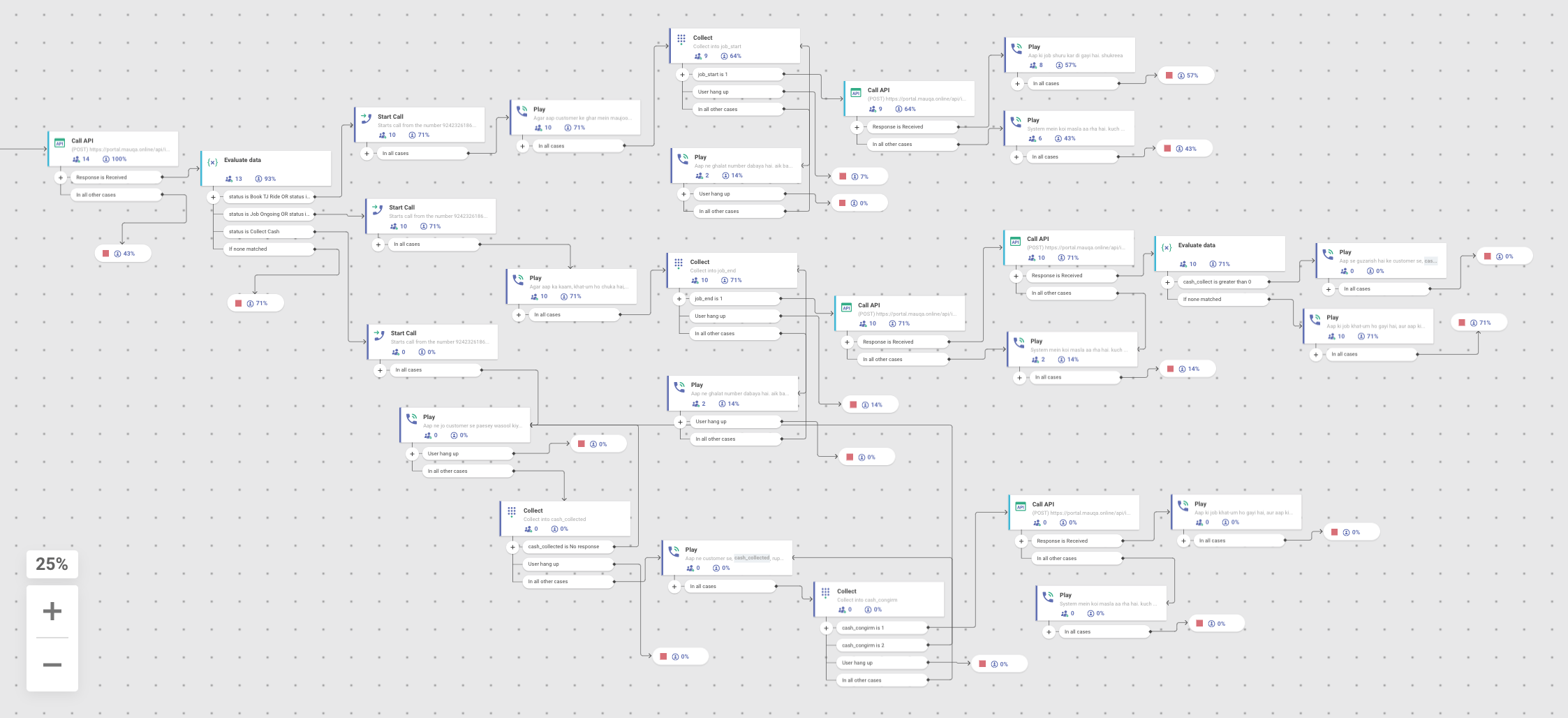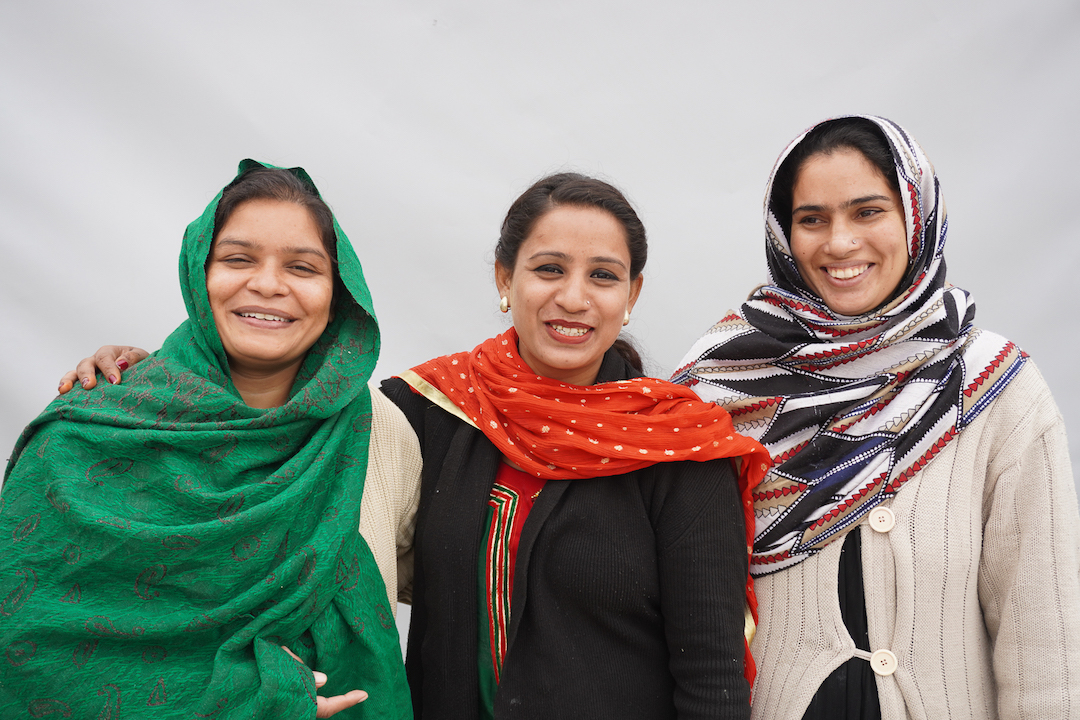Problem statement
Mauqa Online is an on-demand domestic help service. Whenever a customer books a service, they are connected to a blue-collar worker. For getting a worker to a customer, we relied on a call centre to execute all booking operations. The call centre operator would manually call each worker to convey or collect information such as schedules, reminder, arranging rides, punching booking start and end times.
We have a worker mobile app but its adoption is small because of the above two figures. This restricted us to using voice through calls. The reliance on manually calling up workers was really costly and limited us to a certain number of bookings per day. So automating communication became a business necessity to scale, rather than to just increase productivity.
Hypotheses for solution
I started with documenting the communication process that was followed for each booking. Using historic data, I then categorized it into either Outbound Communication (initiated by operators) or Inbound Communication (initiated by worker).
- Outbound: Reminders about upcoming bookings, ride details, customer address, booking assignment, cash deposit reminders
- Inbound: Recording start and end time of a booking
For some outbound communication, a response was required from the worker as well, such as accepting a new booking.
Next I created a basic literacy survey for a 100 workers. It was found that 20% could read Urdu in Roman format, 40% could read Urdu in native script and 97% could read numbers.

This identified that textual channels such as SMS could be used to convey one-way information containing just numbers. This also led to the conclusion that if we were to automate any communication, the medium would have to be voice.

Automating communication
Validating Voice
For voice, a 3rd-party voice campaign software by Telenor was used as a MVP. To see if workers could understand and respond to 'Robocalls', I pre-recorded some booking reminders. These were initiated manually by our operators and the worker's response was recorded using either 1 or 2 keypress on their phone's dial-pad.
The adoption for Robocalls was slow at start, but with a few iterations, the response rate rose to 90%. This validated our hypothesis that automating voice calls could be an effective channel.
Validating SMS
Next, to test out SMS, I started sharing worker's ride details via SMS, rather than over a call. This included the registration number of their vehicles. All of the workers was able to match the number plates using the numbers in the text. This validated the hypothesis that SMS could be used to convey familiar information as long as it follows a template.
Automating Inbound and Outbound
With these 2 channels validated, I used a 3rd-party software, Infobip. I used their Text-to-Speech functionality to convert roman urdu text to pre-recorded audio. This saved us the hassle of recording all audio in advance and fine tune easily. We integrated their APIs to our backend, so that a worker's response could be recorded directly to our database.

In Infobip, I created complex decision trees called 'Flows' to cater to major use-cases for each communication. If a worker selected a wrong option or dropped the call, etc. there was always an 'if-else' condition added as a fallback.
Summary of automations
- For all 2-way outbound communication, I used automated Robocalls to inform workers and gather their responses.
- For all 1-way outbound communication, I used SMS to convey simpler information.
- For inbound communication, I setup an Interactive Voice Response (IVR) system on a phone number. A worker sends a misscall at this number and receive an automated call back. This way the calling costs were not put on the worker.
Results and Learning
Although the plan was to roll out features one by one, but the COVID-19 pandemic forced us to launch features sooner. We reduced our operator count from 9 down to just 1. Luckily for us, the automation was able to support the operator in handling most of the workload.
For me, automating these multiple processes was as complex an undertaking as it was not just a challenge on the technological front. It required an understanding of the worker's comprehension, constraints and behaviour.
One example for this would be that even though information was conveyed clearly over call, most of the workers were not familiar with the concept of pressing the keypad to record a response. This was then added to their training later.
The key takeaway from this project is that to automate any process, it is crucial that it is refined and validated. If the process does not work 20% of the time, it will compound when automated and increase your headache by 200%.
